
In the last few weeks of Lent, I watched a number of 2018 films—many biopics, but others as well—that were made 2018, the same year in which Pope Francis’ document on The Call To Holiness in Today’s World was released. And it made me start to think about why these particular stories are being told—they represent what heroes our culture presents to us today—for admiration, for imitation. Heroes are people we admire, sometimes for their extraordinary abilities, sometimes for their extraordinary choices and their will to persevere. What kind of heroism is the world holding up? And how does that compare with the “heroism” of holiness?
You can listen to my take on heroes and holiness in 2018 movies here on the Salt + Light Radio Hour, Easter Edition!
This is an especially pressing question during Holy Week and Easter week, when we witness again, in the Liturgy of the most sacred weeks of the Church year, Jesus’ love for us, and the truest heroism—Someone who freely gives his life to save everyone; Someone who allows himself to be tortured and most cruelly executed after dedicating his entire life to teaching, healing, and loving; Someone who forgives those who crucified him and makes his death become a source of life, healing, hope, and redemption for anyone open to receiving him.
It helps us to look at heroes in own time and culture to understand what heroism and holiness might look like for us. Below, I’ve included a few mini-commentaries of the movies I sampled from 2018: superhero films Black Panther, Avengers: Infinity Wars and Spider-Man: Into the Spider-Verse; some very well-produced biopics Green Book, Bohemian Rhapsody, and A Private War; and several fictional stories, including the sci-fi thriller that really spoke of heroism, A Quiet Place, and Roma, which is fictional but based on the life of the real person.
I think all of these movies can offer us some inspiration in how we are called to live as human beings made in the image and likeness of God. The protagonists in each movie have heroic attributes. However, I was a bit troubled by the continuing trend I often see—and saw particularly in some of the biopics from this year—that reinforce the myth of the “tortured genius.” While it is true that heroism comes at great personal cost, several films highlighted the protagonists’ failures on the level of relationships (including relating to one’s self), to the point of self-destruction. True heroism is not self-destructive…. The people portrayed as Freddie Mercury and Marie Covin are in these films are admirable: for talent, for commitment to the truth, for wanting to make people happier. But they don’t offer us an example of how to live true heroism on a day to day basis.
Imperfect Heroes
Not that we expect our heroes to be perfect. But heroism can become even greater when it is nurtured by the strong relationships in our lives: first of all a strong relationship with God, and then, strong relationships with the special people in our lives: family, community. These enable us to grow personally into well-balanced individuals who can live and appreciate the little moments of our lives, to learn how to truly give of themselves in love, and to be at peace with themselves even in the midst of great suffering.
God calls us to a holiness that is 360 degrees—it permeates our whole life, including the little moments. Living the mission that God has entrusted to us is an essential part of that journey to holiness. We can make a case that Freddie Mercury had a mission from God to bring “harmony” to the world and to unite people through music, and that Marie Colvin’s heroic drive to spread the truth about the tragic consequences of war was also a mission from God. And whatever our mission in life, it will take a toll, because it is a giving of ourselves in love, putting others first. But if we, like Freddie and Marie (in the films) become emptied out by the mission God entrusts to us, then we are missing an important part of that mission. Our mission in life doesn’t need to cut us off from our loved ones, from our humanity, from ourselves.
This is where I think Pope Francis’ description—meditation, really—on holiness in Gaudete et Exsultate can enrich our culture’s portrayals of heroism. In addition to his beautiful reflection on the Beatitudes (which are truly a portrait of Jesus), Pope Francis highlights five signs of holiness that he feels are especially meaningful in today’s world:
5 Signs of Holiness especially meaningful in today’s world:
- Solid grounding in the God who loves and sustains us (#112): perseverance, patience, meekness,
- Joy and a sense of humor
- Boldness and passion
- In community (including the little gestures of love)
- In constant prayer
These five signs of holiness today can be summed up in a characteristic that Pope Francis calls, “more human, more alive,” which I’ve included as a sixth characteristic below:
1 & 5) Solid Grounding in the God Who Loves and Sustains Us & Constant Prayer: “God is the Father who gave us life and loves us greatly. Once we accept him, and stop trying to live our lives without him, the anguish of loneliness will disappear (cf. Ps 139:23-24). In this way we will know the pleasing and perfect will of the Lord (cf. Rom 12:1-2) and allow him to mould us like a potter (cf. Is 29:16).” (GE, #51) “Only on the basis of God’s gift, freely accepted and humbly received, can we cooperate by our own efforts in our progressive transformation.[62] We must first belong to God, offering ourselves to him who was there first, and entrusting to him our abilities, our efforts, our struggle against evil and our creativity, so that his free gift may grow and develop within us…” (#112)
2) Joy and a Sense of Humor: “The Lord asks everything of us, and in return he offers us true life, the happiness for which we were created. He wants us to be saints and not to settle for a bland and mediocre existence.” (#1)
“Do not be afraid of holiness. It will take away none of your energy, vitality or joy. On the contrary, you will become what the Father had in mind when he created you, and you will be faithful to your deepest self. To depend on God sets us free from every form of enslavement and leads us to recognize our great dignity.” (#32)
3) Boldness and Passion (in Holiness, in our Personal Mission): “All the faithful, whatever their condition or state, are called by the Lord—each in his or her own way—to that perfect holiness by which the Father himself is perfect.” (#10) “The important thing is that each believer discern his or her own path, that they bring out the very best of themselves, the most personal gifts that God has placed in their hearts [rather than hopelessly trying to imitate something not meant for them.]” (#11) “Each saint is a mission, planned by the Father to reflect and embody, at a specific moment in history, a certain aspect of the Gospel.” (#19) “You too need to see the entirety of your life as a mission.” (#23)
4) Belonging/In Community: “Growth in holiness is a journey in community, side by side with others.” (#141) “We are never completely ourselves unless we belong to a people.” (#6) “This holiness to which the Lord calls you will grow through small gestures [of love].” (#16) “Live the present moment, filling it to the brim with love.” (#17) “Cherish the little details of love.” (#145)
6) More Human, More Alive : “We need a spirit of holiness capable of filling both our solitude and our service, our personal life and our evangelizing efforts, so that every moment can be an expression of self-sacrificing love in the Lord’s eyes. In this way, every minute of our lives can be a step along the path to growth in holiness.” (#31) “We are all called to be holy by living our lives with love and by bearing witness in everything we do, wherever we find ourselves…. Holiness, in the end, is the fruit of the Holy Spirit in your life.” (#14-15)
(You can find the entire document Gaudete et Exsultatet or The Call to Holiness in Today’s World here.)
Many of the 2018 films show boldness and passion in carrying out one’s mission, and sometimes they also include, at least in part, the aspect of community. But even when movies get both of those right, they miss the “grounding” in God and how that relationship with God fills all the aspects of our lives to overflowing.
That’s why I find it helpful to sum up these five “signs” of Pope Francis in his phrase “More Human, More Alive.” It’s a helpful phrase to describe our path to holiness in today’s world. “More human, more alive!” captures the joy, the sense of belonging, the little moments of family or communal life, that so often our recent portrayals of heroes—especially the tortured genius—leave out.
“Holy Wholeness”
We can look for this “holy wholeness”—that gives us heroes we don’t just admire but also emulate, who can truly bring us closer to the imitation of Christ—especially in two films from 2018: Roma and A Quiet Place.
Roma is an exquisite portrayal of a humble servant and nanny who, in both the little and big moments of her life of service, is dedicated to the family and children she serves. She is far from perfect—and yes, she looks for love in a superficial relationship—but we never see her hold back from giving herself in love, especially to the children. Even when she’s tired. Even as we witness the striking contrast between her hard-working, difficult life and the ease in which the family lives.
The word “exquisite” really captures how the film is rooted in details, in the “little gestures of love” that Gaudete et Exsultate talks about. To me, Roma is a meditation on one of God’s anawim, who are God’s chosen ones who are vulnerable, little, poor, and yet who live the Beatitudes. This Easter season, I plan to watch the film again, this time looking for the Beatitudes—to see if I can find all eight of them illustrated.
The other film that brings us closer to a genuine portrayal of a “holy wholeness” is A Quiet Place, the sci-fi thriller that could be a family film, depending on if your older children will enjoy a really scary film with lots of breath-robbing, edge-of-your-seat moments. A Quiet Place is the post-apocalyptic story of a family who hide from the indestructible monsters who hunt humans down through their extremely developed sense of hearing. Yet, the parents’ love for each member of the family—even their unborn child—is so great that, despite the dangers of raising children, they seek to survive all together and both protect and nurture the lives of all their children—even at the risk of their own lives. And their efforts are incredibly creative and poignant.
A Quiet Place has many thriller moments, but we are also treated to haunting, intimate moments of tenderness, kindness, and true sharing of life—which is, I believe, one of the reasons we find the characters so believable and the story so incredibly moving.
Both A Quiet Place and Roma highlight the noblest quality of both heroism and holiness: self-sacrificing love that lays one’s life down for the sake of the other. And while they awe us with the characters’ heroism, they help us to see that we are all called to be heroes, each in our own God-given way.
Spider-Man: Into the Spiderverse is the 2018 film that can be watched as a family to explore heroism: what heroism is, costs, and means for the world and for the heroes themselves. The truest “comic-book” movie I have ever seen, Spider-Man: Into the Spiderverse is a tribute to comic books, superheroes, and all forms of animation. I’d like to conclude with a line from the protagonist, Miles, a teenager who has just taken on the role of the masked Spider-Man. Miles offers viewers—and us—this Pope-Francis-like challenge: “I never thought I’d be able to do any of this stuff. But I can. Anyone can wear the mask. You can wear the mask.”
Mini-Commentaries on Some Popular 2018 Films
Bohemian Rhapsody: Perhaps the most acclaimed film of 2018, the story of hugely popular rock group Queen and especially lead singer Freddie Mercury, whose driving ambition as expressed in the film is to give people what they want, musically (and thus experientially) speaking. A fan-like tribute to the music of Queen.
A Private War: The story of heroic journalist Marie Colvin, who covered the tragedies of war for almost 20 years, seeing her role as a reporter to “bear witness” and to make others care enough about the sufferings she witnessed. This documentary-like film is realistic, grim, and inspiring at the same time.
Green Book: The story of two men who overcame their prejudices and assumptions about their differences—in race, upbringing, and culture—to work together to bring the beauty of music to Southern USA, blinded by racism. It’s a remarkable film about a remarkable friendship and how it affected both men to grow into becoming more than they were.
Roma: The fictional but based-on-a-real-person story of a young indigenous woman who served as a domestic servant and nanny to a wealthy family in Mexico in the 1960s. A slow-paced, artistic film, shot in black and white, that allows us to contemplatively witness what it means to be a humble servant. Especially rewarding film for movie buffs.
A Quiet Place: The post-apocalyptic sci-fi thriller about a family whose love for each member of the family—including the unborn child—is undaunted even in the face of utter destruction from undefeatable aliens who have destroyed human civilization by hunting down human beings through sound.
Photo by Steve Halama on Unsplash

![Toronto_BJP_2011_8x11[1]](https://windowstothesoul.wordpress.com/wp-content/uploads/2008/09/toronto_bjp_2011_8x111.jpg?w=231&h=300)


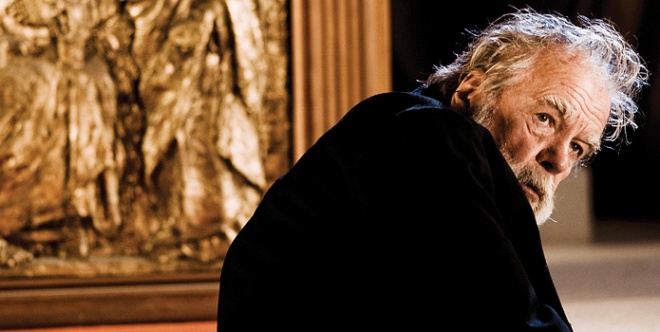
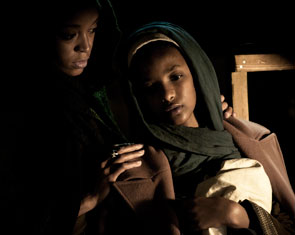
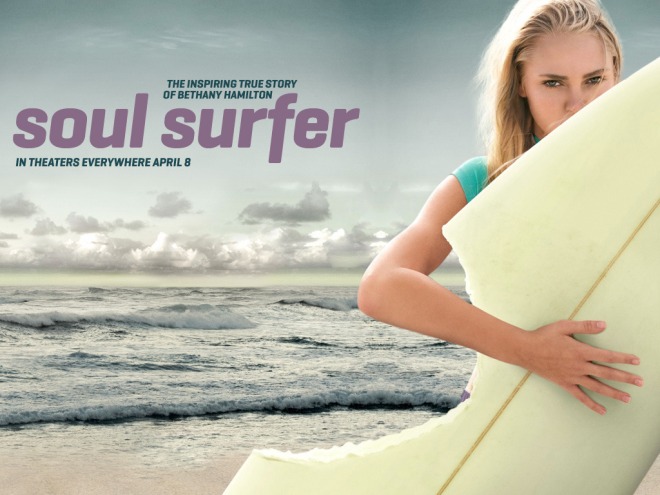


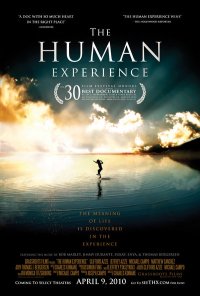
 On Saturday night, I attended the second showing of the North American premiere of the Polish film Popieluszko: Freedom Is Within Us. The film courageously attempts to capture the life, character, and brutal murder of the Servant of God, Father Jerzy Popieluszko, popularly known in Poland as the “solidarity priest.”
On Saturday night, I attended the second showing of the North American premiere of the Polish film Popieluszko: Freedom Is Within Us. The film courageously attempts to capture the life, character, and brutal murder of the Servant of God, Father Jerzy Popieluszko, popularly known in Poland as the “solidarity priest.”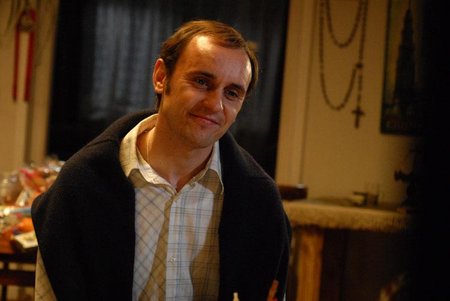 Popieluszko: Freedom Is Within Us achieves this. While the film may not be a “great” film, it compellingly covers the major events of the Father Popieluszko’s life, and gives us glimpses of other, less important events which, nonetheless, give us insight into his character. Actor Adam Woronowicz actually seems to become Popieluszko onscreen, imitating his very gestures. The film is slow in places, even grueling–because during its 2 1/2 hours, we witness an oppressive government’s efforts to crush the soul of the Polish people. But writer/director Rafal Wieczynski skillfully directs the acting and pacing, so that it builds to a powerful end where we not only accompany Fr. Jerzy in his martyrdom for truth, but also begin to grasp the powerful impact this humble man has had, and may continue to have, on so many.
Popieluszko: Freedom Is Within Us achieves this. While the film may not be a “great” film, it compellingly covers the major events of the Father Popieluszko’s life, and gives us glimpses of other, less important events which, nonetheless, give us insight into his character. Actor Adam Woronowicz actually seems to become Popieluszko onscreen, imitating his very gestures. The film is slow in places, even grueling–because during its 2 1/2 hours, we witness an oppressive government’s efforts to crush the soul of the Polish people. But writer/director Rafal Wieczynski skillfully directs the acting and pacing, so that it builds to a powerful end where we not only accompany Fr. Jerzy in his martyrdom for truth, but also begin to grasp the powerful impact this humble man has had, and may continue to have, on so many. The film seems to capture well the tension of those times where it was dangerous to say the rosary with too much devotion, never mind express a political opinion. One interesting facet of the film is the director’s choice to occasionally cut in real historical footage, which, rather than distracting, heightens our awareness that this is a true story.
The film seems to capture well the tension of those times where it was dangerous to say the rosary with too much devotion, never mind express a political opinion. One interesting facet of the film is the director’s choice to occasionally cut in real historical footage, which, rather than distracting, heightens our awareness that this is a true story.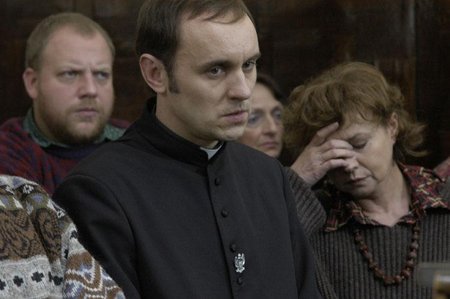
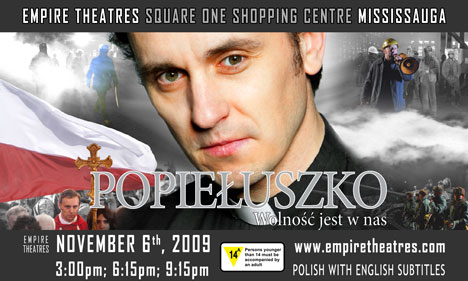 Popieluszko: Freedom Is Within Us is a powerful and insightful film, well worth viewing. It is not being carried nationwide, but can be seen locally at the Empire Theatre at Square One in Mississauga in the upcoming week. I have not yet seen a rating for the film, but due to its violence, the film can be quite disturbing and is not suitable for young children. Made in Poland, the film is in Polish with English subtitles.
Popieluszko: Freedom Is Within Us is a powerful and insightful film, well worth viewing. It is not being carried nationwide, but can be seen locally at the Empire Theatre at Square One in Mississauga in the upcoming week. I have not yet seen a rating for the film, but due to its violence, the film can be quite disturbing and is not suitable for young children. Made in Poland, the film is in Polish with English subtitles.